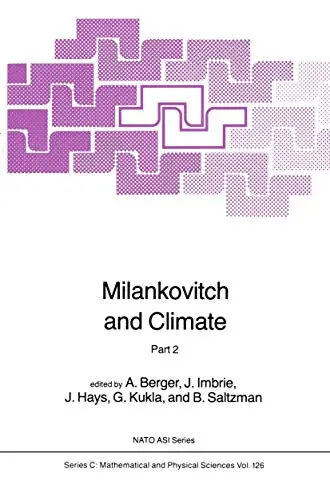
Free Download Milankovitch and Climate: Understanding the Response to Astronomical Forcing by A. Berger, J. Imbrie, J. Hays, G. Kukla, B. Saltzman
English | PDF | 1984 | 377 Pages | ISBN : 9027717788 | 28.7 MB
In recent years there have been many attempts to use simple energy balance models to simulate the climatic changes that occurred during the Pleistocene by altering the earth's energy budget through sma 11 orb ita 1 element changes. Attempts with mean annual models which resolved latitudinal variation in tem- perature failed to produce large ice sheets when the obliquity was changed a few degrees (1,2) although these early models were generally more sensitive than today's parameterizations would suggest. Attention then turned to seasona 1 energy balance models, since the primary insolation anomaly is seasonal. Sel- lers (3), Thompson and Schneider (4) and North and Coakley (5) developed simple models which were either effectively zonally averaged or included a separate land and ocean surface tempera- ture at each latitude. Suarez and Held (6) added some vertical resolution in their model. All included the ice-albedo feedback mechanism and horizontal transport which was essentially diffu- sive. The models shared one interesting property : they remai- ned rather insensitive to the sizes of orbital changes which were thought to have occurred in the Pleistocene. There were minor differences in the results and some pointed toward possi- ble ways out of the puzzle but curiously the mechanisms of ice- -albedo feedback in the insolation and water vapor feedback in the infrared terms ·seemed too weak to account for the ice ages (for a review of these models see (7) and more recently (8)).
[/b]
Code:
Bitte
Anmelden
oder
Registrieren
um Code Inhalt zu sehen!